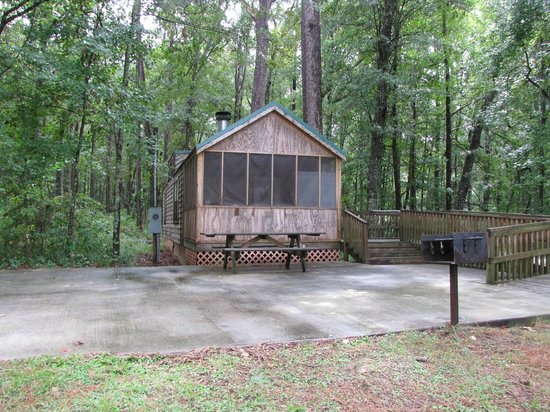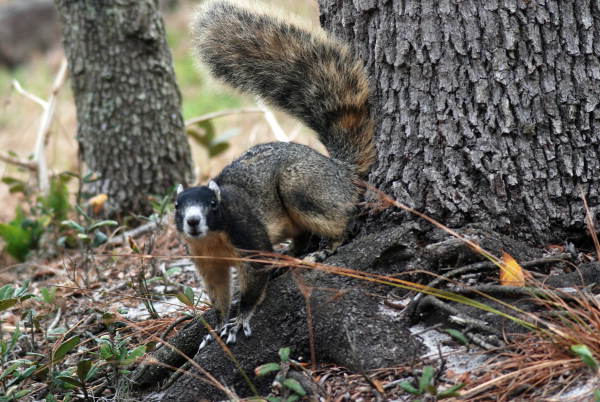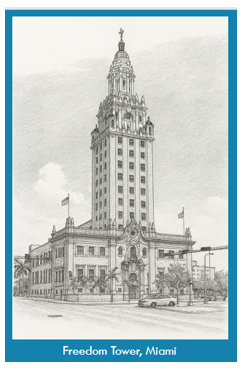- Home
- Florida History
- Florida Heritage Sites
- Three Rivers State Park
THREE RIVERS STATE PARK
By Mike Miller November 26, 2025
OVERVIEW
Three Rivers State Park covers 686 acres along the southwestern shore of Lake Seminole in Sneads, Florida about 5 miles west of Chattahoochee. It's where Florida meets the southwest corner of Georgia.
The Chattahoochee and Flint Rivers from Georgia merge to form the lake, eventually joining to become the Apalachicola River. These are the three rivers in the park’s name.
 The air-conditioned cabin at Three Rivers State Park
The air-conditioned cabin at Three Rivers State ParkEstablished in 1955, the park embodies the "Real Florida" with its serene lakeside setting, diverse ecosystems, and abundant wildlife including white-tailed deer, fox squirrels, gray foxes, and migratory birds.
HISTORICAL SIGNIFICANCE
The land now encompassing Three Rivers State Park has deep prehistoric roots, serving as a vital hub for Native American communities for millennia.
The confluence of the Chattahoochee and Flint Rivers was a rich food source and key node in trade and transportation networks.
Archaeological excavations have uncovered significant sites like Kemp's Mound, a prominent Native American structure, along with artifacts from the Woodland and Mississippian periods.
These discoveries underscore the area's role in indigenous history. In the late 1700s, William Augustus Bowles married into the local native tribes.
One of Bowles' most notable historical endeavors was his attempt to establish an independent Creek Nation, sometimes referred to as the “State of Muscogee.” This effort was ultimately unsuccessful.
Around 1792 Bowles established a trading post along the Chattahoochee River just north of where the park is now. It closed around 1800.
In 1816 Fort Scott was built on the west bank of the Flint River to defend the US border (Georgia) from Spanish Florida, particularly from invasion by the British like during the War of 1812.
In 1821 Florida became a US territory and the fort was abandoned. In 1947, the US Army Corps of Engineers began constructing Jim Woodruff Dam and Lock.
This created 37,500 acre Lake Seminole and submerged much of the area, including the remains of Fort Scott. The state park itself opened to the public in 1955.
The park specifically protects high quality longleaf pine - turkey oak sandhills habitat. The upland portions of the park contain some of the best remaining examples of this in the eastern Panhandle.
There are classic sandhill ridges with widely spaced longleaf pines, a wiregrass-dominated groundcover, and scattered turkey oaks, exactly the habitat that once dominated 90 million acres from Virginia to Texas before European settlement.
Fewer than 4% of pre-settlement longleaf forests remain, making every intact tract like Three Rivers critically important. Longleaf pine ecosystems that support tremendous biodiversity are globally imperiled.
Also found in the park is the critically endangered Florida Torreya (stinking cedar). The Florida Yew is another extremely rare tree also found in small populations along the Apalachicola drainage.
Sherman’s fox squirrel is the only fox squirrel native to Florida. It’s designated a Species of Special Concern by the Florida Fish and Wildlife Conservation Commission (FWC).
Its numbers have declined sharply since the 20th century because of habitat loss, fragmentation, and historic overhunting. The park has exactly the type of environment this subspecies depends on.
When you see these squirrels, you’ll note that they’re dramatically larger than the common gray squirrel, often 22 to 28 inches long and weighing up to 3 pounds.
They have striking color variation: a jet-black head with a bright white nose and ears, white eye rings, and a body that can be black, brown, or silvery gray.
This “masked bandit” appearance makes it instantly recognizable and one of the most photogenic mammals in the Florida Panhandle.
 Sherman’s fox squirrel
Sherman’s fox squirrelby Lovett E. Williams 1985
Unlike many rare Florida species that are nocturnal or shy, Sherman’s fox squirrels are diurnal and relatively bold.
Visitors routinely see them bounding across trails or sitting upright on sandy roads at Three Rivers, especially along the 2.5-mile Torreya Trail and near the campground.
Their size, color, and habit of freezing in plain sight make them a highlight for photographers and families. A healthy population is a sign of a healthy ecosystem.
Bald eagles also nest in the park, which is part of the Great Florida Birding Trail. And of course, Lake Seminole is the centerpiece of the park.
VISITING DETAILS
Three Rivers State Park is at 7908 Three Rivers Park Road, Sneads, FL 32460.
From I-10, take Exit 158, drive north into Sneads, turn left onto US-90, then right onto River Road (SR-271) at the flashing yellow light; continue about 2 miles and the park entrance will be on your left.
The park is open daily from 8 AM until sunset, with entrance gates closing promptly at sundown. Park near the boat ramp or shaded picnic areas.
Stop by the ranger station for current trail maps, wildlife sightings, or a bird-watching checklist.
Restrooms are available in the park. Three picnic pavilions, grills, picnic tables and a restroom are located in the picnic area. Family reunions and weddings are popular.
Overnight camping near the banks of Lake Seminole is available year-round with views of both Florida and Georgia. There is one cabin on site; it’s air-conditioned.
There are 9.7 miles of multi-use trails, some through rolling hills (amazing to those of us from the flat parts of Florida).
The 2.5-mile Torreya Trail through pine flatwoods and hardwood hammocks is a favorite. Wear sturdy closed-toe shoes for sandy sections and occasional roots.
Lake Seminole is renowned for bass, bream, and crappie fishing. There’s a 100-foot fishing pier in the camping area. The public concrete boat ramp is near the day-use area (a second ramp is reserved for registered campers).
There are another two county-maintained ramps for larger boats. Shallow-draft boats are highly recommended due to submerged stumps in the lake.
Osprey, bald eagles, and great blue herons are commonly spotted along the shoreline. Park tours can be scheduled by calling 850-482-9006 in advance.
Leashed pets are welcome in most outdoor areas but must stay out of the cabin and bathhouses (service animals excepted). Check their website for updates or closures.
THREE RIVERS STATE PARK WEBSITE
LOCATION MAP

Florida is the fastest-growing state in the United States and also the fastest-changing. If you see anything in this article that has changed or is in error, please let me know.
Thousands of Florida fans subscribe to our free daily Ezine, Florida Heritage Travel and we have 130,000 followers on Facebook.
By Mike Miller, Copyright 2009-2025
Florida-Back-Roads-Travel.com
Florida Back Roads Travel is not affiliated with or endorsed by Backroads, a California-based tour operator which arranges and conducts travel programs throughout the world.
